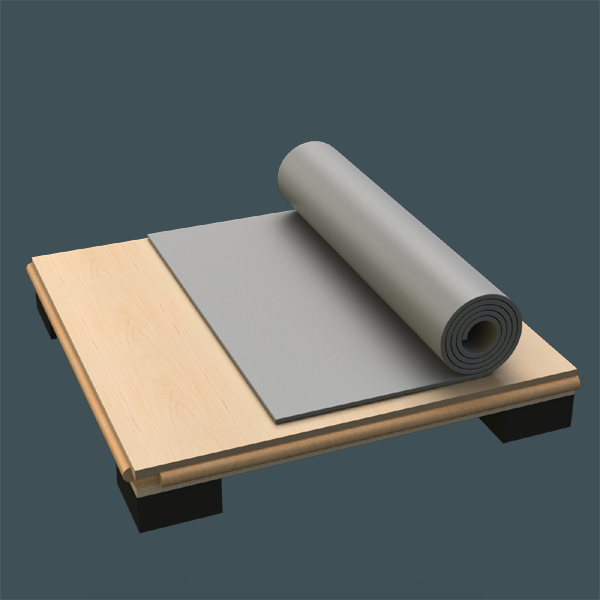
Little by little we are seeing hardwood dance floors disappearing beneath layers of synthetic coverings to protect and extend the life of the floor, and doing so is like keeping a collectible toy in the packaging – an investment, always pristine, never to be played with. For tap dancers whose art form has evolved with wood flooring in mind this is a bit of a let down.

You’ll appreciate the diversity in your investment portfolio when you’re older.
Modern dance studios are state-of-the-art facilities that must cater to multiple disciplines of dance, from ballet to modern to tap and even Indian kathak and Irish step dancing. However, if a small to medium sized studio only has three rooms and hosts ten different forms of dance/exercise classes, it may be doubtful that tap alone will pull the weight of 30-50% of the flooring budget to justify having a special room. Times are tough and the expense of flooring can make or break a fledgling dance studio, but can we compromise on the health and progress of our students, young and old?
Why Marley?
For practically any form of dance, a PVC (poly-vinyl-chloride) surface has become a popular alternative to wood. This type of vinyl flooring is eponymously referred to as “marley” after the British company that originally produced the floor covering up until 1978.
Marley is light, portable, flexible, relatively inexpensive and provides a long-lasting surface that protects the flooring underneath. On top of that, dancers love it; marley won over wood in a poll conducted at Philedelphia’s University of the Arts, where the students in the modern department were asked to try the two surfaces side-by-side.
So why aren’t we rolling out the marley in every dance studio? For tap dancers, marley may pose a problem, as tapping on vinyl surfaces technically limits the tap dancers range of sounds and movements and causes extra wear and tear on a tap dancer’s body.
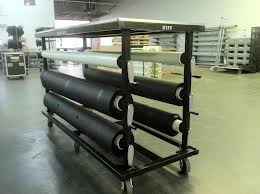
Limitations Of Vinyl Surfaces On A Tap Dancer
What is limited is any step or movement that requires sliding, like wings. When performing a wing, the foot and leg are performing two contradictory movements – a wing requires that the body rise off of the floor by jumping, while the foot is pressed down into the floor and moved straight out to the side, where the friction created by pressing into the floor will cause a loose ankle to roll to the side of the foot creating the first scrape sound of the wing. Any move involving the ankle must be carefully considered, and the amount of pressure needed to overcome the extra friction created by sticky vinyl turns learning wings into an anxious chore for students. And we all hate chores.
Another range of movements limited to tap dancers by vinyl flooring is sliding. Sliding has been around since tap’s heyday and has been the signature move of such tap pioneers as Raymond “Toe” Winfield, The Nicholas Brothers, and Dr. Jimmy Slyde.
You know who else loves to slide around the dance floor? Kids!
They beg me to work sliding with them across the floor. They take a a few giant steps and launch themselves across the room, after learning the prerequisites of sliding, like keep your legs bent and feet flat. As in any dance class, some students will fall, but an amazing thing happens, they get back up laughing and try again. Something has changed; the students are now at play. Totally engaged, students are laughing and having fun akin to stepping onto an icy spot and sliding around, but now it is a skill in the context of a structured art form. And if a young tap dancer ever decides to jump into an improv circle nothing gets the “ooo”s and “ahh”s like a well executed slide in a tap combination.
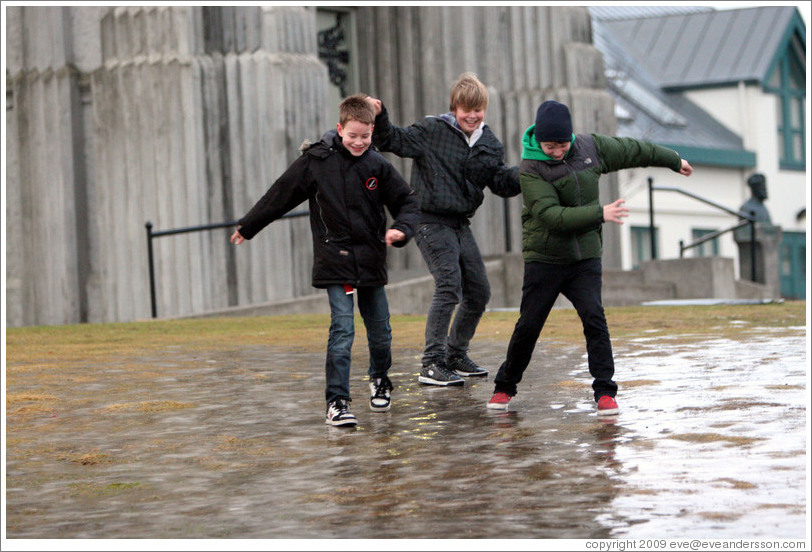
Kids and sliding are like cats and paper bags -THEY SIMPLY CAN”T RESIST!
Only on vinyl flooring, none of this is possible. The risk of injury is too great. Students would tumble face-first into the ground when, expecting tap shoes to be slick, their feet come to a complete, sticky halt. Sliding is simply not taught in any dance studio that only has vinyl dance surfaces and slides are restricted from a professionals repertoire when he/she is asked to perform on a stage covered with marley.
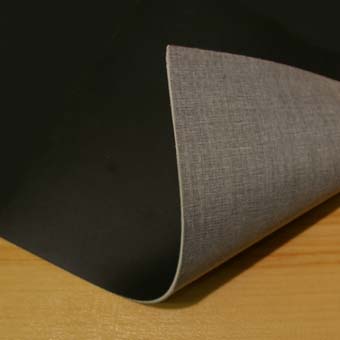
Marley’s Affect On A Tap Dancer’s Sound
The prevailing theory is that a vinyl floor covering will reduce the sound of the taps, which results in a dancer having to strike the surface harder causing above average wear and tear on their body. But does marley really eat up a tap dancer’s sound to the point of physical risk? Let’s find out.
Now, I’m no acoustical engineer…
But Dr. James F. Yerges is, and I contacted him at the office of Yerges Acoustics in Downers Grove, IL, to see if he could shed some light on the sound absorption properties of poly-vinyl-chloride and how we would measure it.
“The Noise Reduction Coefficient, or NRC, is a simplified or short form metric for the sound absorption properties of a surface finish. Suppose a material was totally reflective, absorbed nothing, it would have an NRC of 0.00. Suppose it was totally one hundred percent absorptive it would have an NRC of 1.00. If you are picking a purposeful material for that purpose [sound absorption] it’s really of not much value if it less than fifty percent, or 0.50. A vinyl coating over a floor would have an NRC no greater than about 0.03, so it’s really only about three percent absorptive. A typical wood floor has an NRC of approximately 0.09, or nine percent absorptive. So wood is actually a tiny bit more absorptive than the vinyl.”
Wow, so vinyl material actually absorbs LESS sound than wood! But if the vinyl material itself is not the culprit in the sound reduction of tap dance, then why DO my taps sound softer when I tap on marley?
If you are standing in the studio listening to the dancers tap, you’re hearing suppression of the tap by the resiliency of the vinyl. The vinyl is giving a little bit and absorbing the energy whereas the harder wood gives a sharp report.
So a tap dancer WOULD have to dance a little harder to create the same level of volume as dancing on a wood floor. There is still something a little off about the sound of tap on marley, like it is muffled and more subdued. For example, scraping sounds are difficult or impossible to hear on marley.
“The wood floor, in that situation when you are drawing the tap across the wood, the wood is radiating that sound the way the body of a violin would radiate the sound from the string. It’s the same phenomenon. It’s not generating energy, but it’s radiating the sound into the air so that you can hear it.”
“If you tap harder you will produce more volume, but you can tap until Hell freezes over and you won’t be able to get that same crisp, sharp report that you get from a hard surface. You can get it louder by stomping on it harder, but you can’t produce the same high frequency component. You can’t get the same sharp attack dancing on a vinyl surface as you would on a hard wood surface.”
For more information on tap dance’s relationship to frequency and other elements of sound and music, please check out previous Tapography posts Tap Is Music (And I Can Prove It) Part 1 and Part 2.
Transitioning From Wood To Marley
Tap dancing on marley may limit the steps and sounds that a tap dancer can produce, but are there actually any health risks to tap dancing on a vinyl dance surface?
I spoke with Melissa Reh, MSPT, CSCS, physical therapist and tap dancer, and she also has concerns about tap dancers dancing on vinyl flooring. For Melissa, it is the transition from wood to a vinyl dance surface that poses a problem.
“Transitioning from a wood dance surface to a marley dance surface can be difficult for tap dancers because all of the slide you normally feel goes away. Our taps can get lodged in the marley when our brain and body expects to be moving across a smooth floor. The disconnect makes it more difficult to safely and effectively execute tap steps, especially those that require our momentum to move across the floor, like flaps, riff walks, or slides. We have to pick up our feet much more not to stick. If our taps stick unexpectedly when our momentum is really going, we are more likely to fall or get injured.”
But there is a solution to this, right? Just have the students practice on marley and they won’t have to worry about adapting to a marley covered stage. Oh wait, but that means we can’t work on sliding and other steps. So, the options are to train well rounded tap dancers and risk injury, or shelter dancers from popular and relevant techniques, but at least they will be safe. Now would be the appropriate time for the obligatory, “Won’t somebody PLEASE think of the children!”
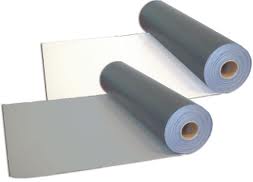
A Compromise?
There may be! It appears that the manufacturers of vinyl floor coverings, companies like Harlequin and Stagestep, have been listening to consumers and are producing options with tap dancers in mind.
In a follow up article I will explore the cutting-edge of marley production and the lengths that manufacturers are going to make flooring suitable for tap dancers. Are marley manufacturers on a roll, or should we roll up the marley and just give tap dancers their wood? Find out next time in the Tapography column on DanceAdvantage.net.
Special Thanks
Dr. James F. Yerges has a Ph.D. in engineering and specializes in acoustics – sound, noise and vibration control – and works as a consultant at Yerges Acoustics in Downers Grove, IL.
Melissa Reh has a Masters of Science in Physical Therapy and is a certified Strength and Conditioning Specialist, is a Senior Physical Therapist at Creative Rehab in Libertyville, IL and is the Director of Health and Wellness at Audible Odyssey in Chicago, IL.
What problems have you encountered with different types of flooring?
What solutions have you discovered?
Please share in the comments!
Tristan Bruns has studied the art form of tap dance with Donna Johnson, Ted Levy, Lane Alexander and Martin “Tre” Dumas and has a BA in Music from Columbia College Chicago. Tristan has been an ensemble member of such Chicago tap companies as BAM!, The Cartier Collective and MADD Rhythms. Tristan currently produces his own work through his company, TapMan Productions, LLC, which includes the performance ensemble The Tapmen and the tap and guitar “band” of The Condescending Heroes.

